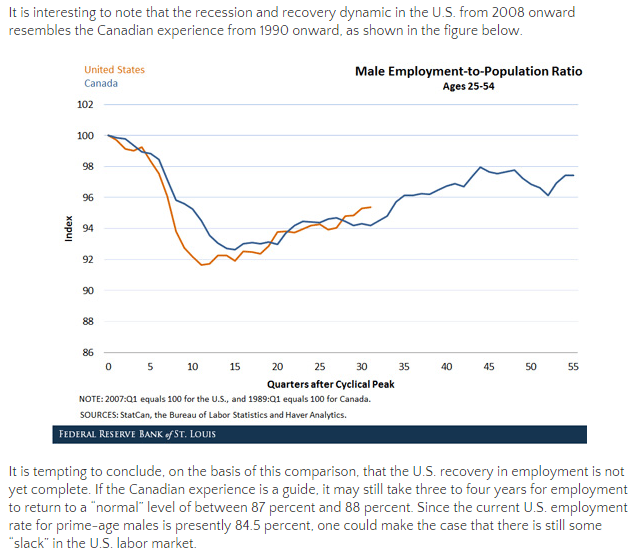How Have Prime-Age Workers in School Affected the Labor Market?
Just one of several possible factors keeping the participation rate down and the reported unemployment rate lower than otherwise, which in my narrative are the consequences of low aggregate demand/the federal deficit is too small, etc.
From the St. Louis Fed:
In the first scenario, we kept the increase in schooling of the population 16-21 that has occurred over the past 10 years. But we kept the share of the population 22 and older that attends school in 2015 at its 2005 levels. In this scenario, the May unemployment rate would have been 6.6 percent instead of the 5.5 percent observed that month.
And this:
How Long Until “Slack” Is Out of the Labor Market?
Presentation in Vila-real:

